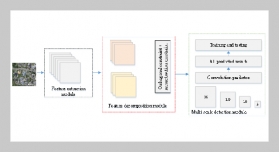REFERENCES
- [1] Vanderplaats, G. N., Numerical Optimization Techiques for Engineering Design, McGraw-Hill, New York, U.S.A. (1984).
- [2] Kirsch, U., Structural Optimization, Fundamentals and Applications, Springer-Verlag (1993).
- [3] Rao, S. S., Engineering Optimization, Theory and Practice, 3rd ed.,Wiley Eastern Limited, New York, U.S.A. (1996).
- [4] Back, T., Evolutionary Algorithms in Theory and Practice: Evolution Strategies, Evolutionary Programming, Genetic Algorithms, Oxford University Press (1996).
- [5] Eiben, A. E. and Smith, J. E., Introduction to Evolutionary Computing, Springer-Verlag (2003).
- [6] Box, G. E. P., “Evolutionary Operation: A Method for Increasing Industrial Productivity,” Applied Statistics, Vol. 6, pp. 81101 (1957).
- [7] Dasgupta, D. and Michalewicz, Z., (Ed.), Evolutionary Algorithms in Engineering Applications, SpringerVerlag (1997).
- [8] Basseur, M., Seynhaeve, F. and Talbi, El-G., “Design of Multi-objective Evolutionary Algorithms: Application to the Flow-Shop,” The Congress on Evolutionary Computation (CEC’2002), Vol. 2, IEEE Service Center, Piscataway, New Jersey, pp. 11511156 (2002).
- [9] Johnston, R. L. (Ed.), Applications of Evolutionary Computation in Chemistry, Springer-Verlag (2004).
- [10] Murray, B. A., “Using Pareto Genetic Algorithms for Preliminary Subsonic Wing Design,” The 6th AIAA/ NASA/USAF Multidisciplinary Analysis and Optimization Symposium, Bellevue, Washington, AIAA Paper 964023 (1996).
- [11] Weile, D. S., Michielssen, E. and Goldberg, D. E., “Genetic Algorithm Design of Pareto Optimal Broadband Microwave Absorbers,” IEEE Transactions on Electromagnetic Compatibility, Vol. 38, pp. 518525 (1996).
- [12] Coello Coello, C. A., Christiansen, A. D., and Hernandez, F. S., “A Simple Genetic Algorithm for the Design of Reinforced Concrete Beams,” Engineering with Computers, Vol. 13, pp. 185196 (1997).
- [13] Farmani, R., Savic, D. A. and Walters, G. A., “Evolutionary Multi-objective Optimization in Water Distribution Network Design,” Engineering Optimization, Vol. 37, pp. 167183 (2005).
- [14] Coello Coello, C. A., “Theoretical and Numerical Constraint-Handling Techniques Used with Evolutionary Algorithms: A Survey of the State of the Art,” Computer Methods in Applied Mechanics and Engineering, Vol. 191, pp. 12451287 (2002).
- [15] Hajela, P. and Yoo, J., “Constraint Handling in Genetic Search Using Expression Strategies,” AIAA Journal, Vol. 34, pp. 24142420 (1996).
- [16] Hofmeyr, S. A., An Interpretative Introduction to the Immune System, Design Principles for the Immune System and Other Distributed Autonomous Systems, Eds. Ohen, I. and Segel, L., Oxford University Press (2000).
- [17] Timmis, J., Knight, T., de Castro, L. N., and Hart, E., “An Overview of Artificial Immune Systems,” Computation in Cells and Tissues: Perspectives and Tools for Thought, Natural Computation Series, Eds: Paton, R. et al., Springer, pp. 5186 (2004).
- [18] Dasgupta, D., Ji, Z. and Gonzalez, F., “Artificial Immune System (AIS) Research in the Last Five Years,” The proceedings of the Congress on Evolutionary Computation Conference (CEC), Canberra, Australia, (2003).
- [19] Dasgupta, D. and Forrest, S., “Artificial Immune Systems in Industrial Applications,” The Proceedings of the Second International Conference on Intelligent Processing and Manufacturing of Materials (IPMM), Honolulu, Vol. 1, pp. 257 -267, (1999).
- [20] Hajela, P. and Lee, J., “Constrained Genetic Search via Schema Adaptation: An Immune Network Solution,” Structural Optimization, Vol. 12, pp. 1115 (1996).
- [21] Forrest, S., Javornik, B., Smith, R. E. and Perelson, A. S., “Using Genetic Algorithms to Explore Pattern Recognition in the Immune System,” J. Evolutionary Computation, Vol. 1, pp. 191211 (1995).
- [22] Coello Coello, C. A. and Cortes, N. C., “Use of Emulations of the Immune System to Handle Constraints,” Evolutionary Algorithms, Intelligent Engineering Systems Through Artificial Neural Networks(ANNIE’ 2001), ASME Press, Editors: Dagli, C. H. et al., Vol. 11, pp. 141146 (2001).
- [23] Coello Coello, C. A. and Cortes, “A Parallel Implementation of an Artificial Immune System to Handle Constraints in Genetic Algorithms: Preliminary Results,” Proceedings of the Congress on Evolutionary Computation 2002, IEEE Service Center, Piscataway, New Jersey, Vol. 1, pp. 819824, (2002).
- [24] Luh, G.-C. and Chueh, C.-H., “Multi-modal Topological Optimization of Structure Using Immune Algorithm,” Computer Methods in Applied Mechanics and Engineering, Vol. 193, pp. 40354055 (2004).
- [25] Tazawa, I., Koakutsu, S. and Hirata, H., “An Immunity based Genetic Algorithm and its Application to the VLSI Floorplan Design Problem,” Proceedings of 1996 IEEE International Conference on Evolutionary Computation (ICEC ‘96), Nayoya University, Japan, pp. 417-421, (1996).
- [26] Huang, S.-J., “An Immune-Based Optimization Method to Capacitor Placement in a Radial Distribution System,” IEEE Transactions on Power Delivery, Vol. 15, pp. 744749 (2000).
- [27] de Castro, L. N. and Zuben, F. J. V., “The Clonal Selection Algorithm with Engineering Applications,” Workshop Proceedings on Artificial Immune System and Their Applications, Las Vegas, U.S.A., (2000).
- [28] De Castro, L. N. and Timmis, J., “An Artificial Immune Network for Multimodal Function Optimization,” Proceedings of IEEE Congress of Evolutionary Computation (CEC’02), Vol. 1, pp. 699674 (2002).
- [29] Shih, C. J., Chen, B. S., Kuan, T-L and Chen, C. H., “Enhanced Expression Strategy for Evolutionary Optimization in Large Scale Structural Design,” submitted to the Journal of Advances in Engineering Software (2005).
- [30] De Castro, L. N. and Zuben, F. J. V., “Artificial Immune Systems: Part I - Basic Theory and Applications,” Technical Report, TR-DCA 01/99, State University of Campinas (1999).
![The clonal selection principle of B-cells (From [30]). An Immunity Based Hybrid Evolutionary Algorithm for Engineering Optimization](/images/article_images/9/9_1_03.jpg)








